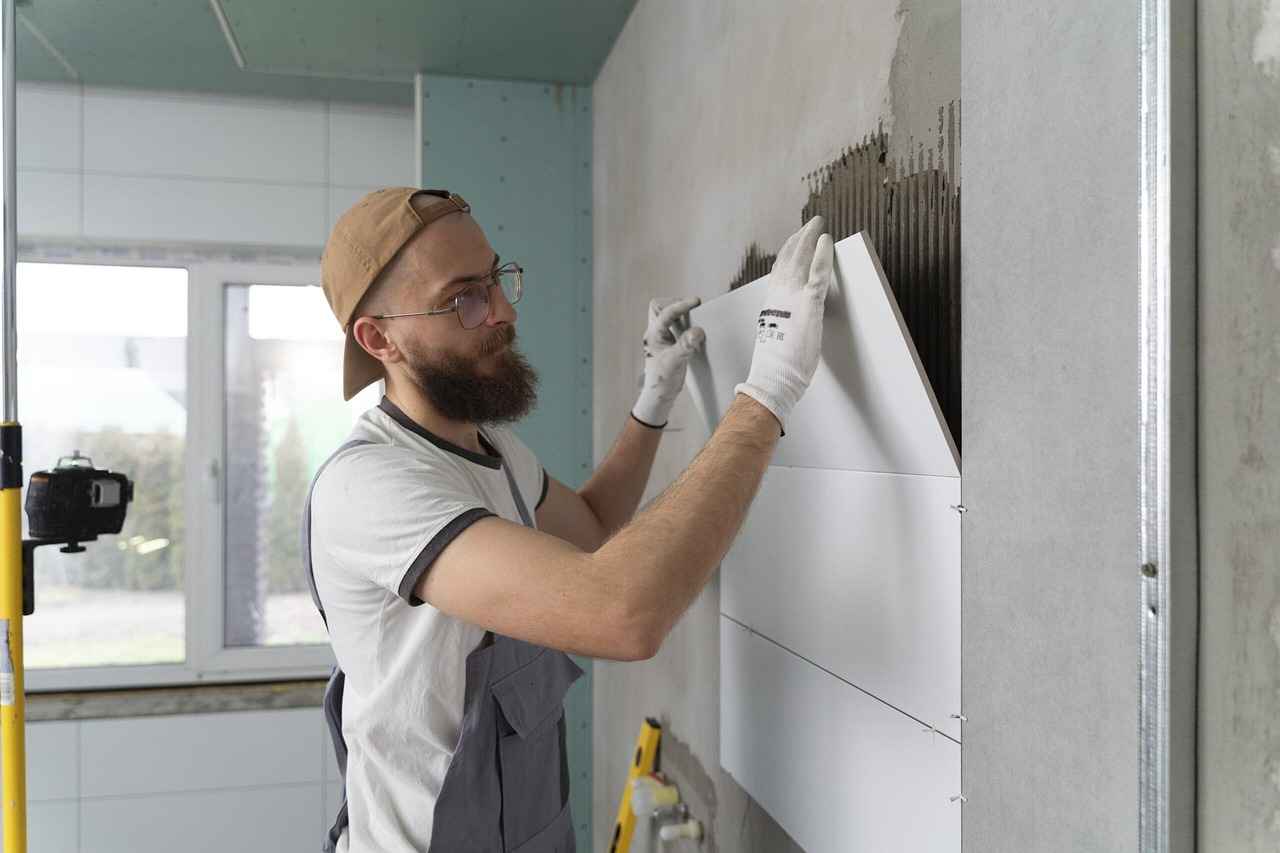This article explores how to create a stunning macramé room divider, perfect for adding a touch of bohemian style to your home while providing functional separation of spaces. Macramé has surged in popularity due to its versatility and aesthetic appeal, making it an ideal choice for home decor.
What is Macramé and Why Use It?
Macramé is an ancient textile art form that utilizes knotting techniques to create intricate designs. Its history dates back to 13th-century Arabia, where it was used to finish the edges of woven textiles. Today, macramé has found a resurgence in modern interior design, celebrated for its ability to blend functionality with artistry. By incorporating a macramé room divider, you not only enhance your space but also add a unique artistic touch that reflects your personal style.
Choosing the Right Materials for Your Macramé Project
Selecting the appropriate materials is crucial for a successful macramé divider. Consider the following:
- Macramé Cord: Popular options include cotton, jute, and synthetic cords. Each type offers unique textures and strengths, allowing you to choose based on your desired aesthetic.
- Beads and Accessories: Incorporating beads can enhance the visual appeal of your divider. Choose materials that complement your overall design.
- Tools: Essential tools include scissors, measuring tape, and dowels. Having the right tools can streamline your crafting process.
Step-by-Step Guide to Creating Your Macramé Room Divider
Creating your macramé room divider involves several key steps:
- Measuring and Planning Your Design: Accurate measurements are vital. Sketch a design that balances both aesthetic and functional needs.
- Mastering Basic Macramé Knots: Familiarize yourself with essential knots like the square knot and lark’s head knot. These knots form the foundation of your project.
Incorporating Color and Texture into Your Divider
Enhancing your macramé divider with color and texture can significantly elevate its visual appeal. Consider the following:
- Color Theory: Select a color palette that complements your existing decor. Understanding color theory can help create a harmonious space.
- Textural Variations: Mixing different cords and knots can add depth and interest to your design.
Maintenance and Care for Your Macramé Room Divider
To ensure your macramé divider remains beautiful over time, proper maintenance is essential:
- Cleaning Techniques: Regularly dust your divider and use gentle cleaning methods to avoid damaging the knots.
- Storage Tips: When not in use, store your divider in a cool, dry place to prevent wear and tear.
Creative Ways to Use Your Macramé Room Divider
A macramé divider can serve multiple purposes beyond simply separating spaces:
- Wall Art: Transform your divider into a stunning piece of wall art, adding visual interest to your home.
- Incorporating Plants: Enhance your divider by integrating plants or decorative elements, creating a vibrant and inviting atmosphere.
By following these guidelines, you can create a beautiful macramé room divider that not only serves a practical purpose but also adds a unique touch of bohemian charm to your living space.
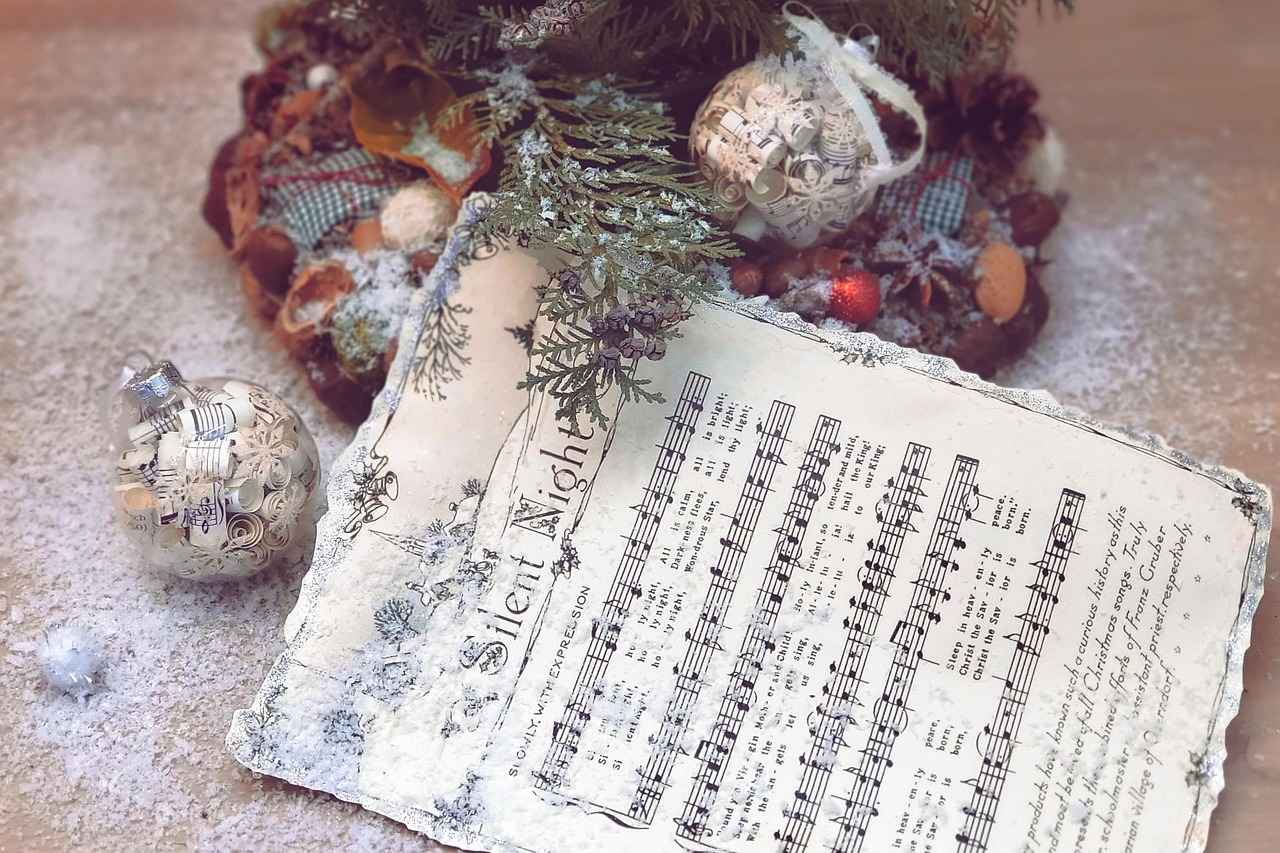
What is Macramé and Why Use It?
Macramé is a fascinating textile art form that employs a variety of knotting techniques to create intricate and decorative pieces. Originating in the 13th century, this craft has evolved over the centuries, gaining popularity during the 1970s bohemian movement and re-emerging in modern interior design. Its unique aesthetic and versatility make it a favored choice for those looking to add a touch of creativity and texture to their living spaces.
The beauty of macramé lies in its ability to transform simple cords into stunning works of art. The process involves knotting different types of cords—such as cotton, jute, and synthetic materials—into patterns that can be both functional and decorative. This makes macramé an ideal choice for various home decor items, including wall hangings, plant hangers, and room dividers.
One of the main reasons to incorporate macramé into your interior design is its bohemian charm. The intricate knots and patterns can create a warm and inviting atmosphere, perfect for those who appreciate a relaxed, natural aesthetic. Additionally, macramé can serve as a conversation starter, showcasing your personal style and creativity.
Furthermore, macramé is an eco-friendly option that aligns with the growing trend of sustainability in home decor. By using natural fibers and materials, you can create beautiful pieces that are not only stylish but also environmentally conscious. This aspect resonates with many homeowners who prioritize sustainability without sacrificing design.
In modern interior design, macramé has found its place in various settings, from cozy apartments to spacious homes. Its adaptability allows it to blend seamlessly with different styles, whether you prefer a minimalist look or a more eclectic vibe. Macramé can also be easily customized to match your color palette, ensuring that it enhances your existing decor.
Another appealing aspect of macramé is its DIY potential. Many enthusiasts enjoy crafting their own macramé pieces, which adds a personal touch to their home. With a few basic knots and some creativity, anyone can create stunning macramé items that reflect their individual style. This hands-on approach not only fosters creativity but also provides a sense of accomplishment and connection to your living space.
In conclusion, macramé is more than just a decorative art form; it is a versatile and sustainable choice for modern interior design. Its rich history, combined with its contemporary appeal, makes it a popular option for those looking to enhance their homes with unique and personalized decor. Whether you’re a seasoned crafter or a novice, exploring the world of macramé can lead to beautiful creations that bring warmth and character to your space.
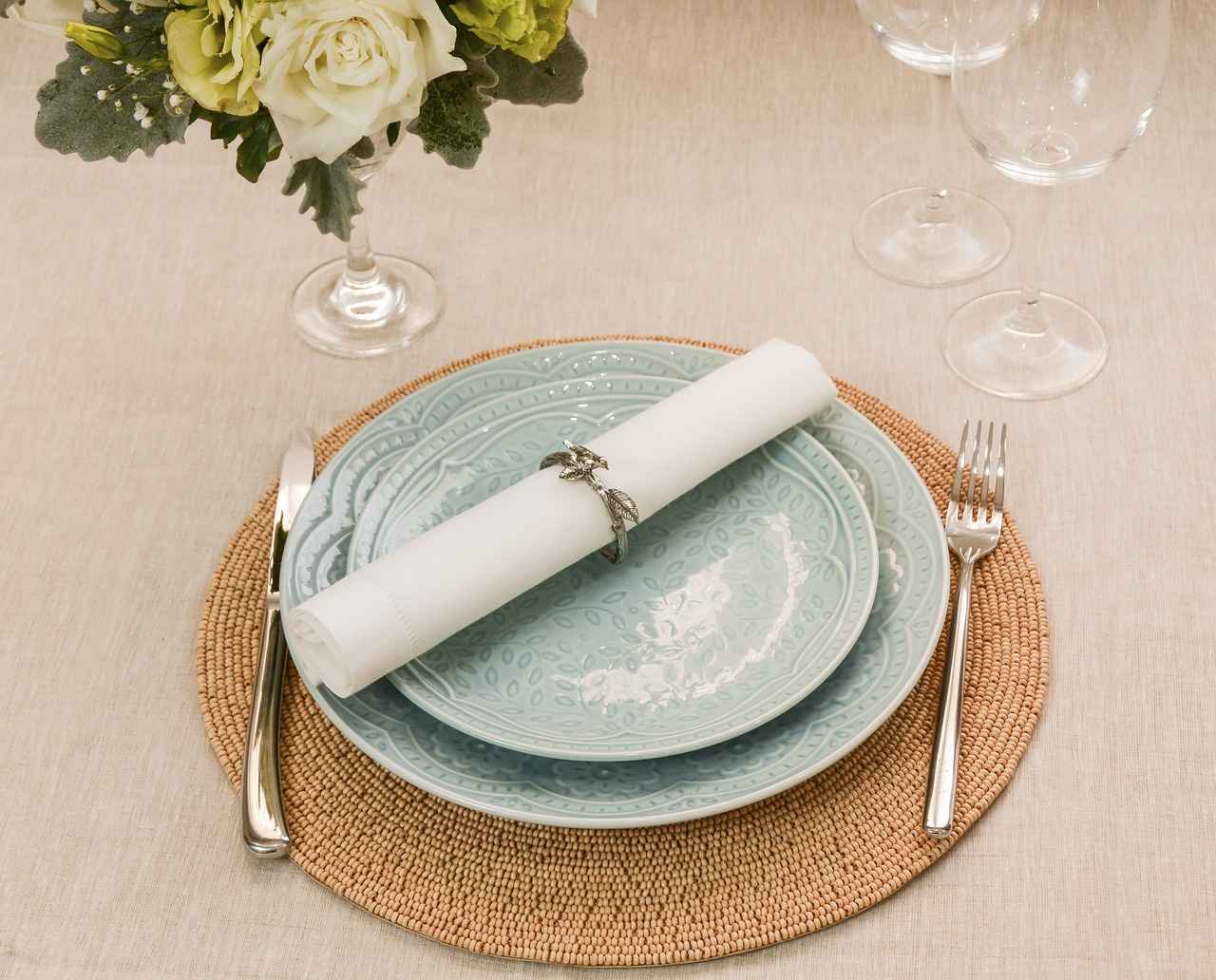
Choosing the Right Materials for Your Macramé Project
When embarking on your macramé project, the importance of selecting the right materials cannot be overstated. The quality and type of materials you choose will significantly impact the final look and durability of your macramé divider. This guide will delve into the essential components you need, including cords, beads, and tools, ensuring you have everything required to create a stunning piece that complements your space.
Choosing the right cord is fundamental to your macramé project. Here are some popular options:
- Cotton Cord: This is the most commonly used material in macramé. It is soft, easy to work with, and comes in various thicknesses. Cotton cord is also biodegradable, making it an eco-friendly choice.
- Jute Cord: Known for its rustic appeal, jute adds a natural texture to your projects. However, it can be rough on the hands and may not be suitable for intricate designs.
- Polyester Cord: For those seeking durability and weather resistance, polyester is an excellent option. It is less prone to fraying and can withstand outdoor conditions, making it ideal for garden or patio dividers.
Incorporating beads and other decorative elements can elevate your macramé divider. Here are some ideas:
- Wooden Beads: These add a natural and earthy feel to your design. They are lightweight and come in various sizes and finishes.
- Glass Beads: For a touch of elegance, glass beads can introduce color and shine, enhancing the overall aesthetic of your divider.
- Metal Accents: Incorporating metal rings or charms can provide a modern twist to your macramé piece, creating a striking contrast with softer cords.
Having the right tools can streamline your crafting process. Essential tools include:
- Scissors: A sharp pair is necessary for clean cuts, ensuring your cords do not fray.
- Measuring Tape: Accurate measurements are crucial for a well-proportioned piece.
- Dowels or Rings: These serve as the base for your macramé divider, allowing you to hang and display your creation effectively.
By carefully selecting the right materials, you set the foundation for a successful macramé project. Consider the texture, color, and durability of each element as you plan your design. Whether you opt for soft cotton cords or robust polyester, each choice will contribute to the overall look and feel of your room divider.
In conclusion, the materials you choose for your macramé project play a vital role in its success. With the right cords, beads, and tools, you can craft a beautiful and functional piece that enhances your living space. Embrace the creative process and let your imagination guide you!
Types of Macramé Cord
When embarking on your macramé project, understanding the different types of cords available is essential. Each type of cord brings its own unique texture and strength, making them suitable for various applications. This section reviews some popular choices, including cotton, jute, and synthetic options, highlighting their unique characteristics and ideal uses.
Cotton cord is one of the most popular choices for macramé projects due to its softness and versatility. It is made from natural fibers, making it eco-friendly and biodegradable. Cotton cords are available in various thicknesses, allowing crafters to choose the right size for their specific project. Additionally, cotton is easy to dye, enabling you to customize your designs with vibrant colors.
- Pros: Soft, easy to work with, and available in various colors.
- Cons: May not be as strong as synthetic options and can fray over time.
Jute cord offers a rustic and natural look, making it an excellent choice for bohemian-style projects. This cord is made from the jute plant, which is known for its durability and strength. Jute is often used in home decor items, including wall hangings and plant hangers, due to its earthy tones and texture.
- Pros: Strong, biodegradable, and adds a unique texture to designs.
- Cons: Can be rough on the hands and may not hold dye as well as cotton.
Synthetic cords, such as nylon or polyester, are excellent alternatives for those looking for durability and strength. These cords are resistant to wear and tear, making them suitable for outdoor projects or high-traffic areas. Synthetic cords are also available in a wide range of colors and thicknesses, providing flexibility in design.
- Pros: Highly durable, resistant to moisture, and available in many colors.
- Cons: Less eco-friendly and can feel less natural compared to cotton or jute.
When selecting the appropriate cord for your macramé project, it is crucial to consider the desired aesthetic and functional requirements. For instance, if you are creating a decorative piece for indoor use, cotton or jute may be the best options due to their natural feel and appearance. However, if you need a piece that can withstand outdoor elements, synthetic cords would be more suitable.
Ultimately, the choice of cord will impact the overall look, feel, and durability of your macramé creation. By understanding the unique characteristics of each cord type, you can make an informed decision that aligns with your vision and project needs.
Essential Tools for Macramé
Creating a macramé room divider can be a rewarding project that enhances your home’s aesthetic while providing practical space separation. To embark on this journey, it’s essential to have the right tools at your disposal. This section delves into the must-have tools that will streamline your crafting process and elevate your macramé skills.
Having the right tools can significantly impact the quality and ease of your macramé project. The right tools not only make the crafting process more efficient but also ensure that your finished piece is both beautiful and durable. Below are some essential tools you should consider for your macramé room divider:
- Scissors: A good pair of sharp scissors is crucial for clean cuts. Look for fabric scissors or craft scissors that can handle various materials. This will help you achieve precise lengths for your cords, which is vital for maintaining uniformity in your design.
- Measuring Tape: Accurate measurements are key to a successful macramé divider. A flexible measuring tape allows you to measure both straight lines and curves, ensuring that your piece fits perfectly in your designated space.
- Dowels: Dowels serve as the foundation for your macramé project. They provide a sturdy base to hang your knots and can be made from wood or metal. Choose a dowel that is strong enough to support the weight of your macramé without bending or breaking.
- Macramé Cord: The type of cord you select will greatly affect the final look of your divider. Options include cotton, jute, and synthetic cords, each offering different textures and strengths. Consider the aesthetic you want to achieve when choosing your cord.
- Clipboards or Clips: These tools can hold your work in place while you knot. They are especially useful for larger projects, preventing your work from slipping or tangling as you create.
- Ruler: A ruler can help you measure cord lengths accurately, ensuring that your knots are evenly spaced. This is particularly important for maintaining symmetry in your design.
While the tools listed above are essential, there are a few additional items that can enhance your crafting experience:
- Needle: A large-eye needle can help you thread beads or additional cords through your macramé, adding decorative elements to your divider.
- Comb or Brush: After finishing your project, a comb or brush can help you fluff and separate the cords, giving your divider a polished look.
- Work Surface: A clean, flat surface is ideal for working on your macramé. Consider using a large table or a dedicated crafting mat to keep your materials organized.
By equipping yourself with these essential tools, you’ll not only streamline your crafting process but also enhance the overall quality of your macramé room divider. Remember, the right tools can make all the difference in achieving a stunning and functional piece that complements your home.

Step-by-Step Guide to Creating Your Macramé Room Divider
Creating a macramé room divider is an exciting project that can add both style and functionality to your living space. This step-by-step guide will walk you through the entire process, ensuring that both beginners and experienced crafters can follow along with ease.
Before you begin, it’s essential to gather all the necessary materials. Here’s what you will need:
- Macramé Cord: Choose a cord that suits your style, such as cotton, jute, or synthetic options.
- Scissors: For cutting your cord to the desired lengths.
- Dowel or Rod: This will serve as the top support for your divider.
- Measuring Tape: To ensure accurate measurements of your space.
- Beads or Additional Decor: Optional items to enhance your design.
Proper planning is crucial for a successful project. Start by measuring the area where you want to place your room divider. Sketch a simple design that reflects your aesthetic preferences. Consider the height and width of the divider, as well as the type of knots you plan to use.
Familiarizing yourself with essential knots will help you create a beautiful divider. Here are a couple of basic knots to master:
- Square Knot: A versatile knot that forms the basis of many macramé designs.
- Lark’s Head Knot: Used to attach cords to the dowel, providing a strong foundation for your work.
Once you have your materials and design ready, it’s time to start knotting. Begin by attaching your cords to the dowel using the lark’s head knot. Make sure to space them evenly. Then, follow your design pattern, using the square knot and any other knots you have chosen. Remember to keep your tension consistent for a uniform appearance.
Adding color and texture can elevate your macramé divider. Consider dyeing some of your cords to introduce color variations. Mixing different types of cords can also create interesting textures. For example, pairing soft cotton with rough jute can add depth to your design.
Once your knots are complete, it’s time for the finishing touches. Trim the ends of the cords to your desired length, ensuring they are even. You can also add beads or decorative elements to enhance the visual appeal of your divider. These small details can make a significant difference in the overall look.
To keep your macramé room divider looking fresh, regular maintenance is essential. Dust it gently with a soft cloth, and if necessary, wash it by hand with mild soap and water. Avoid harsh chemicals that could damage the fibers. When not in use, store it in a cool, dry place to prevent wear and tear.
With this step-by-step guide, you are well on your way to creating a stunning macramé room divider that not only enhances your space but also showcases your crafting skills. Enjoy the process and let your creativity shine!
Measuring and Planning Your Design
When embarking on a DIY macramé project, is essential to ensure that your final piece not only fits perfectly in your desired space but also aligns with your aesthetic preferences. Proper planning is vital for a successful project, as it sets the foundation for your creative vision.
Accurate measurements prevent common pitfalls that can arise during crafting. If your macramé divider is too large or too small, it can disrupt the flow of your space and lead to dissatisfaction with the final product. By taking the time to measure your area thoroughly, you can avoid these issues and create a piece that enhances your home.
- Identify the Location: Decide where you want to place your macramé divider. Consider factors such as light, traffic flow, and existing decor.
- Measure the Width: Use a measuring tape to determine the width of the area. This measurement will guide you in creating a divider that fits seamlessly.
- Measure the Height: Consider the height of your ceiling. A macramé divider should complement your space, so aim for a height that feels balanced.
- Consider the Depth: If your divider will be freestanding, ensure you account for its depth to maintain stability and avoid accidents.
Once you have your measurements, it’s time to sketch your design. This step allows you to visualize how your macramé divider will look in your space. Here are some tips:
- Use Graph Paper: Drawing to scale on graph paper can help you accurately represent the dimensions of your divider.
- Incorporate Patterns: Consider the knots and patterns you want to use. Visualizing these elements can aid in planning the overall look.
- Color and Texture: Think about how different colors and textures will interact within your space. This can influence your choice of cords and knots.
While planning, it’s crucial to balance functional needs with your aesthetic preferences. Ask yourself the following questions:
- What purpose will the divider serve? (e.g., privacy, decoration, separation of spaces)
- What style do I want to achieve? (e.g., bohemian, modern, minimalist)
- How will the divider interact with existing furniture and decor?
By addressing these questions, you can ensure that your macramé divider not only looks great but also meets your practical requirements.
After considering all the above factors, it’s time to finalize your design plan. Make adjustments as needed based on your measurements and sketches. Remember, flexibility is key; sometimes, the best ideas come from adapting your original vision. With a solid plan in place, you’re ready to gather your materials and start crafting your stunning macramé room divider.
Basic Macramé Knots to Master
Creating a stunning macramé room divider begins with mastering essential knots. Understanding these knots not only enhances your crafting skills but also ensures that your final piece is both beautiful and functional. In this section, we will delve into some fundamental knots, specifically the square knot and the lark’s head knot, which are pivotal for any macramé project.
Knots form the backbone of macramé, providing structure and design to your work. Each knot has its unique purpose and aesthetic appeal, making it crucial to familiarize yourself with them. Mastering these knots will enable you to create intricate patterns and designs, elevating your macramé divider from simple to stunning.
The square knot is one of the most commonly used knots in macramé. It is created by tying two overhand knots in opposite directions. This knot is not only decorative but also provides strength and stability to your project. Here are the steps to create a square knot:
- Start with two cords, one on the left and one on the right.
- Cross the right cord over the left cord.
- Wrap the right cord under the left cord and pull it through the loop.
- Now, take the left cord and cross it over the right cord.
- Wrap the left cord under the right cord and pull it through the loop.
- Pull both ends to tighten the knot.
The lark’s head knot is another essential knot that is frequently used in macramé projects. This knot is particularly useful for attaching cords to a dowel or a ring. Here’s how to tie a lark’s head knot:
- Fold a cord in half to form a loop.
- Place the loop behind the dowel or ring.
- Bring the ends of the cord over the dowel or ring and through the loop.
- Pull the ends to tighten the knot around the dowel or ring.
Visual aids can significantly enhance your understanding of these knots. Consider using diagrams or video tutorials available online to see the knots being tied in real-time. This can provide clarity and help you grasp the techniques more effectively.
When starting with macramé, practice is key. Here are some tips to help you master these knots:
- Use a thicker cord for your first attempts, as it is easier to handle.
- Practice tying the knots without any project in mind to build muscle memory.
- Be patient and take your time; precision is more important than speed.
By mastering these basic knots, you will lay a strong foundation for your macramé skills. As you become more comfortable with the square knot and lark’s head knot, you can explore more complex designs and patterns, allowing your creativity to flourish in your macramé projects.
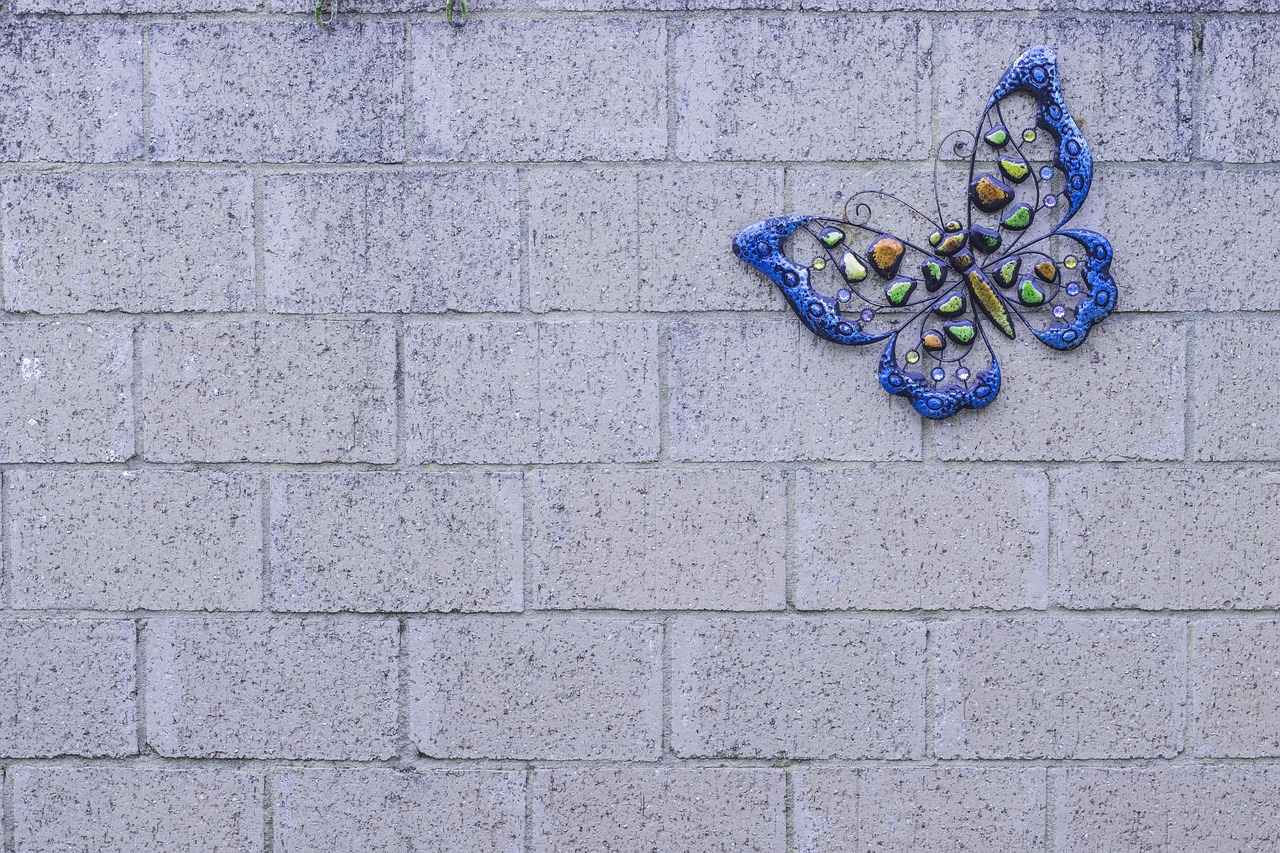
Incorporating Color and Texture into Your Divider
When it comes to crafting a macramé room divider, incorporating color and texture can significantly enhance its visual appeal. By experimenting with various dyeing techniques and integrating different materials, you can create a unique piece that reflects your personal style. Let’s explore some effective methods to achieve a vibrant and textured macramé divider.
Color plays a crucial role in setting the mood of a space. It can evoke emotions, create focal points, and harmonize with existing decor. When selecting colors for your macramé divider, consider the following:
- Complementary Colors: Choose colors that complement your room’s palette to create a cohesive look.
- Accent Colors: Use vibrant accent colors to draw attention to your divider and make it a statement piece.
- Neutral Tones: If you prefer a subtle approach, neutral tones can add elegance without overwhelming the space.
Dyeing your macramé cords can be a fun and rewarding process. Here are some popular techniques:
- Fabric Dyeing: Use fabric dye to achieve rich, long-lasting colors. Follow the manufacturer’s instructions for the best results.
- Natural Dyes: Experiment with natural materials like beet juice, turmeric, or avocado pits to create eco-friendly dyes.
- Ombre Effect: Create a gradient effect by gradually diluting the dye solution as you dip the cords.
Incorporating various textures can add visual depth and interest to your macramé divider. Here are some ideas:
- Combine Different Cord Types: Mix cotton with jute or hemp to create contrasting textures that enhance the overall design.
- Add Beads and Accessories: Integrate wooden beads, shells, or metal accents to introduce additional tactile elements.
- Experiment with Knot Styles: Use a variety of knot techniques to create visual interest and complexity in your design.
To ensure that your macramé divider is visually appealing, it’s essential to maintain a cohesive design throughout. Consider these tips:
- Color Balance: Distribute colors evenly throughout the piece to avoid clashing and to create harmony.
- Texture Variation: Balance smooth and rough textures to create a dynamic yet cohesive look.
- Keep it Functional: While aesthetics are important, ensure that your design still serves the intended purpose of dividing space.
Incorporating color and texture into your macramé room divider not only enhances its beauty but also allows you to express your creativity. By understanding the principles of color theory and experimenting with various materials and techniques, you can craft a stunning piece that elevates your home decor. Embrace the art of macramé and let your imagination guide you in creating a divider that is both functional and visually captivating.
Color Theory for Macramé Projects
Color theory is an essential aspect of design that can significantly impact the aesthetic appeal of your macramé projects. Understanding how colors interact with each other can help you create a harmonious palette that complements your existing decor and enhances your space. This section will delve into the fundamentals of color theory and provide practical tips for selecting the right colors for your macramé room divider.
Color theory is a set of principles used to understand how colors work together. It encompasses the color wheel, which categorizes colors into primary, secondary, and tertiary hues. By grasping these concepts, you can make informed decisions about your color choices, ensuring they resonate with the overall vibe of your room.
The color wheel is a visual representation of colors arranged according to their chromatic relationship. Here are the primary components:
- Primary Colors: Red, Blue, Yellow. These colors cannot be created by mixing other colors.
- Secondary Colors: Green, Orange, Purple. These are formed by mixing primary colors.
- Tertiary Colors: These are created by mixing a primary color with a secondary color.
Complementary colors are those that are located opposite each other on the color wheel. They create a striking contrast that can add energy and vibrancy to your macramé projects. For example:
- Blue and Orange
- Red and Green
- Yellow and Purple
When selecting colors for your macramé divider, consider using complementary hues to create a visually appealing focal point in your space.
If you prefer a more cohesive and subtle look, consider using analogous colors. These are colors that sit next to each other on the color wheel, such as:
- Blue, Blue-Green, and Green
- Red, Red-Orange, and Orange
This approach can create a serene and unified appearance, which is perfect for a relaxing environment.
While vibrant colors can make a statement, incorporating neutral colors such as beige, gray, or white can balance your macramé design. Neutrals provide a backdrop that allows the colors to pop without overwhelming the space. They can also be used to soften bold color combinations, creating a more sophisticated look.
Before committing to a color scheme, it’s essential to test your palette. Here are some practical tips:
- Create Swatches: Use small pieces of cord dyed in your chosen colors to see how they look together.
- Consider Lighting: Colors can appear different under various lighting conditions. Test your palette in natural and artificial light.
- Gather Feedback: Share your color choices with friends or family to get their opinions.
Choosing the right colors for your macramé room divider is a crucial step in creating a cohesive and inviting space. By understanding color theory and experimenting with various palettes, you can achieve a design that not only enhances your decor but also reflects your personal style. Remember, the key is to find a balance that resonates with you and your environment.
Textural Variations to Consider
When designing a macramé room divider, textural variations play a crucial role in creating a visually captivating piece. By incorporating different materials and knots, you can achieve a dynamic and interesting design that enhances the overall aesthetic of your space. This section will explore various methods for mixing textures, offering practical tips and creative ideas to elevate your macramé project.
Mixing textures not only adds depth to your design but also creates a unique visual experience that can draw the eye and spark interest. Different textures can evoke various feelings and moods, allowing you to tailor your room divider to fit your personal style and the ambiance you wish to create. For instance, combining soft cotton with coarse jute can result in a beautiful contrast that highlights the strengths of each material.
To effectively mix textures, you need to start with a variety of materials. Here are some popular options:
- Cotton Cord: Soft and flexible, perfect for intricate knots.
- Jute Rope: Offers a rustic, earthy feel that contrasts well with smoother cords.
- Macramé Twine: Available in various thicknesses, ideal for layering.
- Ribbons or Yarn: Adding these can introduce a delicate touch to your design.
Alongside materials, the choice of knots can significantly impact the texture of your macramé divider. Here are a few knots to consider:
- Square Knot: A fundamental knot that provides a sturdy and uniform texture.
- Lark’s Head Knot: Ideal for attaching cords to a dowel, adding dimension to your design.
- Spiral Knot: Creates a twisted effect, perfect for adding movement to your piece.
- Half Hitch Knot: Offers a more textured and layered appearance, especially when used in varying directions.
Incorporating color alongside texture can further enhance your design. Consider dyeing some of your cords to create a gradient effect, or use colored beads to add pops of color that complement the textures you’ve chosen. The interplay between color and texture can create a striking visual impact, making your macramé divider not just functional but also a stunning focal point in your room.
Here are some practical tips to help you successfully mix textures in your macramé project:
- Start Small: Begin with a small project to experiment with different textures before committing to a larger piece.
- Balance is Key: Ensure that no single texture overwhelms the others; aim for a balanced look.
- Use Visual Aids: Create a mood board with samples of your materials and textures to visualize how they work together.
- Test Knots: Before finalizing your design, practice your knots with different materials to see how they interact.
By incorporating various textures and materials, you can create a macramé room divider that is not only functional but also a true reflection of your personal style. Embrace the art of mixing textures to design a stunning piece that adds depth and character to your space.
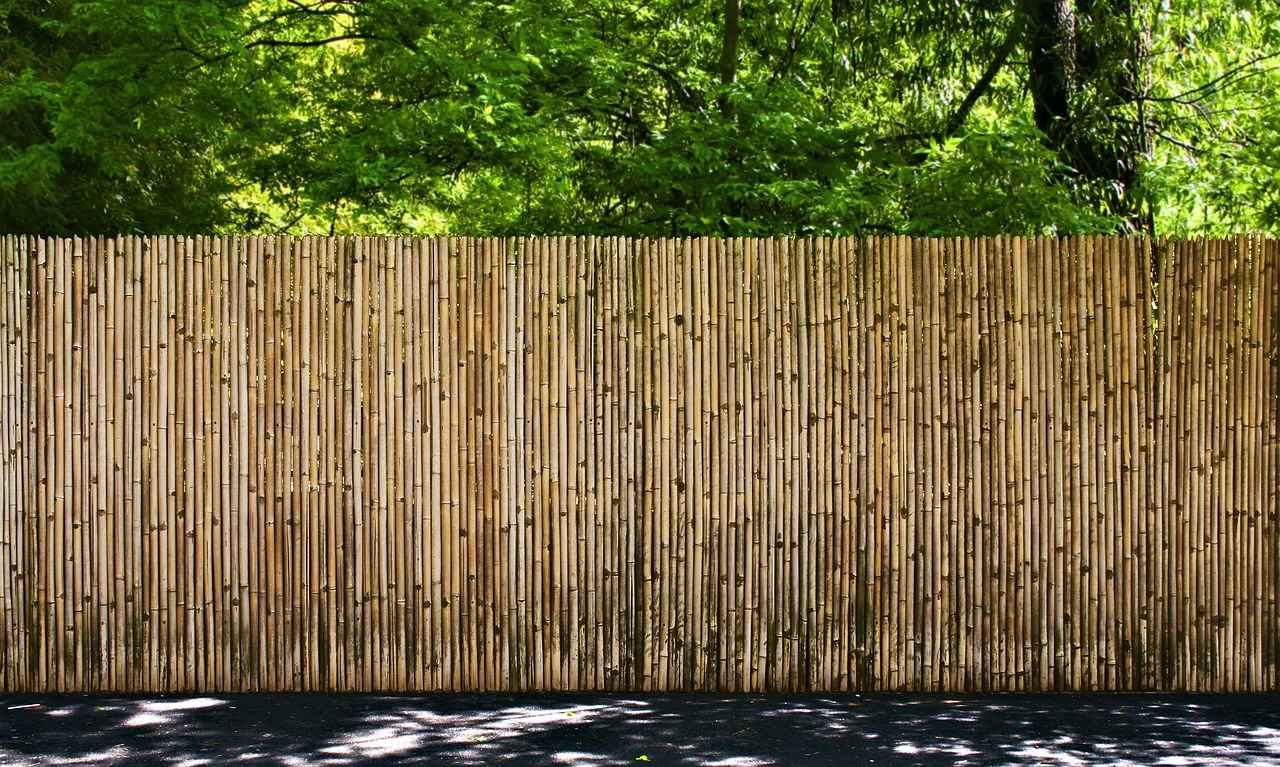
Maintenance and Care for Your Macramé Room Divider
Maintaining the beauty and integrity of your macramé room divider is essential to ensure it lasts for years while retaining its aesthetic appeal. Regular care not only keeps it looking fresh but also preserves the craftsmanship that went into creating it. This section provides valuable tips on how to clean and care for your macramé piece effectively.
Proper maintenance is crucial for several reasons:
- Preservation of Quality: Regular care helps maintain the strength and durability of the knots and materials used.
- Aesthetic Appeal: A clean and well-maintained divider enhances the overall look of your space.
- Longevity: With proper care, your macramé divider can withstand wear and tear, extending its lifespan.
Keeping your macramé divider clean is vital for its upkeep. Here are some effective methods:
- Dusting: Use a soft-bristled brush or a lint roller to remove dust. Gently brush along the cords and knots to prevent damage.
- Spot Cleaning: For stains, use a damp cloth with mild soap. Blot the area gently instead of scrubbing to avoid fraying the cords.
- Hand Washing: If your divider needs a deeper clean, soak it in lukewarm water with a gentle detergent. Avoid twisting or wringing the fabric; instead, let it air dry flat.
When not in use, proper storage is crucial to prevent damage. Consider the following tips:
- Fold Carefully: If you need to store your divider, fold it neatly to avoid creasing. Use a protective cloth to wrap it, preventing dust accumulation.
- Avoid Moisture: Store in a dry place to prevent mold or mildew, which can damage the fibers.
- Keep Away from Direct Sunlight: Prolonged exposure to sunlight can cause fading. Store in a shaded area to maintain color vibrancy.
In addition to cleaning and storage, consider these care tips:
- Rotate Your Divider: If your divider is in a high-traffic area, consider rotating it periodically to ensure even wear.
- Inspect Regularly: Check for any loose knots or fraying cords. Addressing these issues early can prevent further damage.
- Use a Fabric Protector: Consider applying a fabric protector spray designed for textiles to add an extra layer of protection against stains and spills.
By following these maintenance and care tips, your macramé room divider can remain a stunning focal point in your space for years to come. Investing time in its upkeep not only enhances its beauty but also showcases the artistry behind this timeless craft.
Cleaning Techniques for Macramé
Maintaining the beauty and integrity of your macramé room divider is essential for ensuring it remains a stunning focal point in your home. Cleaning your macramé divider is not just about aesthetics; it’s also about preserving the materials and knots that make your piece unique. In this section, we will explore effective methods for dusting and washing your macramé without causing damage.
Over time, dust, dirt, and allergens can accumulate on your macramé divider, potentially affecting its appearance and your indoor air quality. Regular cleaning helps to:
- Preserve the Material: Different materials react differently to cleaning methods, and understanding this can extend the life of your divider.
- Maintain Aesthetic Appeal: A clean divider enhances the overall look of your space, allowing the intricate knots and designs to shine.
- Prevent Damage: Proper cleaning techniques can prevent wear and tear, ensuring your divider remains a cherished piece in your home.
Before diving into washing, it’s essential to start with regular dusting. Here are some effective methods:
- Use a Soft Brush: A soft-bristled brush, such as a paintbrush, can gently remove dust without snagging the fibers.
- Vacuum with Caution: If your divider is particularly dusty, use a vacuum cleaner with a brush attachment on a low setting to avoid pulling on the knots.
- Microfiber Cloth: Dampen a microfiber cloth slightly and wipe down the surface. This method is effective for removing surface dust without damaging the material.
If your macramé divider needs a deeper clean, consider washing it. Follow these steps to ensure a safe process:
- Check the Material: Before washing, identify the type of cord used. Cotton can typically withstand washing, while jute may require special care.
- Prepare a Gentle Solution: Mix a small amount of mild detergent with cold water in a basin. Avoid harsh chemicals, as they can damage the fibers.
- Hand Wash: Submerge your macramé in the solution and gently agitate it. Avoid scrubbing, as this can loosen knots.
- Rinse Thoroughly: After washing, rinse the divider with cold water to remove any soap residue. Ensure all detergent is washed away.
- Air Dry: Lay your macramé flat on a clean towel or hang it to dry. Avoid direct sunlight, which can cause fading.
In addition to regular cleaning, consider these tips to maintain your macramé divider:
- Avoid Excessive Moisture: Keep your divider away from areas with high humidity, as this can lead to mold and mildew.
- Store Properly: If you need to store your divider, ensure it is clean and dry, and keep it in a cool, dry place to prevent damage.
- Regular Inspections: Periodically check your divider for any signs of wear or damage, addressing issues promptly to avoid further deterioration.
By following these cleaning techniques and care tips, your macramé room divider can remain a beautiful and functional part of your home for years to come. Regular maintenance not only preserves its beauty but also enhances your living space.
Storage Tips for Seasonal Changes
When it comes to maintaining the beauty and longevity of your macramé room divider, proper storage is essential. Whether you’re transitioning between seasons or simply need to clear space, knowing how to store your macramé piece can prevent unnecessary wear and tear. This guide provides valuable insights into the best practices for storing your macramé divider effectively.
Macramé is crafted from various materials, including cotton, jute, and synthetic fibers, all of which can be susceptible to damage if not stored correctly. Improper storage can lead to fraying, tangling, and discoloration, which can diminish the aesthetic appeal of your beautiful creation. Therefore, understanding the right techniques for storage is crucial.
- Clean Before Storing: Always ensure your macramé divider is clean before storage. Dust and dirt can accumulate and cause stains over time. Use a soft brush or a lint roller to remove any debris.
- Choose the Right Environment: Store your macramé in a cool, dry place away from direct sunlight. Excessive heat and humidity can lead to mold growth and fading colors.
- Use a Protective Cover: Consider placing your macramé in a breathable fabric bag or wrapping it in a cotton sheet. This protects it from dust while allowing air circulation, preventing moisture buildup.
- Avoid Folding: Instead of folding your macramé, which can create creases and distort its shape, roll it gently into a cylinder. This helps maintain its structure and prevents tangling.
- Store Flat or Hang: If space allows, store your macramé flat on a shelf. Alternatively, hanging it on a padded hanger can help preserve its form and prevent any pressure from other items.
Creating an organized storage space for your macramé divider can make retrieval easier and help maintain its condition. Here are some additional tips:
- Label Your Storage: If you have multiple macramé pieces, consider labeling each storage bag or box. This will help you quickly find the right divider when needed.
- Keep Away from Heavy Items: Ensure that no heavy objects are placed on top of your stored macramé. This prevents crushing and maintains its integrity.
- Regular Checks: Periodically check on your stored macramé to ensure it remains in good condition. Look for signs of moisture or pests that may affect its quality.
While there are many effective storage methods, it’s equally important to know what to avoid:
- Don’t Use Plastic Bags: Avoid plastic bags for long-term storage as they can trap moisture and lead to mildew.
- Don’t Leave in Direct Sunlight: Never store your macramé divider in a location exposed to direct sunlight, as this can cause fading and deterioration of the fibers.
- Don’t Ignore Maintenance: Even during storage, your macramé divider requires some degree of maintenance. Regularly inspect it and ensure it remains clean and dry.
By following these storage tips, you can ensure that your macramé room divider remains in excellent condition, ready to beautify your space whenever you need it. Proper care and storage will not only extend the life of your piece but also maintain its stunning appearance for years to come.

Creative Ways to Use Your Macramé Room Divider
Macramé room dividers are not only functional but also serve as a creative outlet for personal expression. In this section, we will delve into innovative uses and placements for your macramé divider, showcasing its versatility and aesthetic appeal.
While the primary purpose of a room divider is to create separate spaces, a macramé divider can also enhance your home’s decor in unexpected ways. Here are some creative ideas:
- As a Focal Point: Position your macramé divider in a way that it becomes the centerpiece of your room. This can be done by placing it in a well-lit area or against a contrasting wall color, allowing the intricate knots and patterns to shine.
- To Define Spaces: Use the divider to demarcate areas within an open floor plan. For instance, it can separate a living area from a workspace, providing a sense of privacy without sacrificing light and openness.
- Incorporating Lighting: Enhance your divider by stringing fairy lights through the macramé. This not only adds a magical ambiance but also highlights the textures and designs of the knots, making it a stunning visual element at night.
Absolutely! A macramé divider can easily transition into a piece of wall art. By hanging it on a wall, you can create an eye-catching display that adds depth and character to your space. Here’s how:
- Layering with Other Art: Combine your macramé piece with paintings, photographs, or other wall hangings to create a gallery wall. The texture of the macramé will provide a beautiful contrast to flat surfaces.
- Using Different Heights: Hang your divider at varying heights to create visual interest. This technique draws the eye and can make a room feel more dynamic.
Adding plants and decorative elements can significantly enhance the visual appeal of your macramé divider. Here are some tips:
- Hanging Planters: Attach small pots or hanging planters to the macramé. This not only beautifies the divider but also brings a touch of nature indoors, improving air quality and adding a fresh feel to your space.
- Seasonal Decor: Use the divider as a backdrop for seasonal decorations. Whether it’s stringing up ornaments during the holidays or hanging dried flowers in spring, your macramé piece can adapt to various themes throughout the year.
Macramé dividers can also be utilized in outdoor settings, such as patios or gardens. Here’s how:
- Creating Outdoor Rooms: Use your macramé divider to create cozy outdoor nooks. This can be a great way to establish a reading corner or a small dining area, providing shade and a sense of enclosure.
- Windbreak: A macramé divider can act as a stylish windbreak while still allowing airflow. This is particularly useful on breezy days, making your outdoor space more comfortable.
In conclusion, the uses of a macramé room divider extend far beyond mere functionality. Whether as a decorative element, wall art, or a way to integrate nature into your home, the possibilities are endless. With a bit of creativity, your macramé divider can become a stunning feature in any setting.
Using Macramé as Wall Art
is an innovative way to enhance your living space while showcasing your creativity. By transforming your macramé divider into a stunning focal point, you can add a unique visual element to your home decor. This section explores how to repurpose your macramé piece, turning it into captivating wall art that draws attention and admiration.
Macramé is not only a functional room divider but also a versatile art form. Its intricate knots and patterns can create textural depth that elevates any wall. By using macramé as wall art, you can:
- Enhance Aesthetic Appeal: The organic shapes and natural fibers of macramé can complement various interior styles, from bohemian to modern.
- Personalize Your Space: Customizing your macramé design allows you to express your personality and style.
- Add Visual Interest: A macramé wall hanging can serve as a conversation starter and a striking centerpiece in a room.
Transforming your macramé divider into wall art involves a few simple steps:
- Choose the Right Location: Identify a wall that can benefit from a touch of creativity. Consider areas like living rooms, entryways, or bedrooms.
- Adjust the Size: If your divider is too large, consider trimming it down to fit your desired wall space. Maintain the integrity of the design while ensuring it suits the new setting.
- Mounting Options: Decide how you want to display your macramé. You can use a wooden dowel, a decorative branch, or even a simple wall hook to hang your piece.
- Layering Techniques: For added depth, consider layering your macramé with other wall art, such as framed prints or mirrors. This creates a dynamic visual experience.
To further enhance your macramé wall art, think about adding color and accessories:
- Dyeing Techniques: Experiment with fabric dyes to introduce color into your macramé. This can create a vibrant focal point that stands out against your walls.
- Natural Elements: Incorporate small plants or dried flowers into your macramé design. These elements can bring life and freshness to your wall art.
- Lighting Effects: Position your macramé near a light source to create interesting shadows and highlights, enhancing its visual appeal.
To keep your macramé wall art looking its best, regular maintenance is essential:
- Dusting: Use a soft cloth or a feather duster to gently remove dust from your macramé piece.
- Spot Cleaning: If necessary, spot clean any stains with a damp cloth and mild detergent. Avoid soaking the entire piece to maintain its shape.
- Storage: If you need to take down your macramé wall art, store it in a cool, dry place to prevent damage.
By following these guidelines, you can successfully transform your macramé divider into a stunning wall art piece that adds both beauty and character to your home. Embrace your creativity and enjoy the process of making your space uniquely yours!
Incorporating Plants and Decor
When it comes to enhancing your macramé room divider, integrating plants and decorative elements can truly elevate its aesthetic appeal. This section delves into practical ways to incorporate greenery and accessories, creating a harmonious blend of nature and craftsmanship.
Plants are not just beautiful; they also bring life and vitality to any space. By including them in your macramé design, you can achieve a vibrant atmosphere that promotes relaxation and well-being. Here are some compelling reasons to consider:
- Air Quality Improvement: Plants can purify the air, making your living space healthier.
- Visual Interest: Greenery adds a splash of color and texture, enhancing the overall look of your divider.
- Natural Sound Absorption: Plants can help reduce noise levels, providing a more serene environment.
Not all plants are suitable for every environment. When selecting plants for your macramé divider, consider the following:
- Light Requirements: Ensure the plants you choose can thrive in the lighting conditions of your space.
- Size and Growth Rate: Opt for plants that won’t outgrow their space quickly. Small to medium-sized plants like succulents, ferns, or pothos work well.
- Maintenance Level: Choose low-maintenance plants if you prefer minimal upkeep.
In addition to plants, consider incorporating various decorative elements to further enhance your macramé divider:
- Hanging Planters: Use macramé plant hangers to suspend your plants, creating a layered effect.
- Fairy Lights: String lights can add a magical touch, especially in the evening, illuminating your divider beautifully.
- Artistic Accents: Incorporate items like feathers, beads, or shells into your macramé design for added visual interest.
To achieve a harmonious look, ensure that the plants and decorative elements you choose resonate with your overall interior design. Here are some tips:
- Color Coordination: Select plants and decor that complement the color palette of your room.
- Texture Variety: Mix different textures to create depth, such as combining smooth ceramic pots with the rough texture of macramé.
- Theme Consistency: Maintain a consistent theme, whether it’s bohemian, minimalist, or rustic, to unify your space.
By thoughtfully incorporating plants and decorative elements into your macramé room divider, you can create a stunning focal point that not only divides spaces but also enhances the beauty and ambiance of your home. With the right choices, your macramé design will not only serve a functional purpose but will also reflect your personal style and love for nature.
Frequently Asked Questions
- What materials do I need to create a macramé room divider?
To craft a stunning macramé room divider, you’ll need macramé cord (like cotton or jute), scissors, measuring tape, and a dowel or rod for hanging. Optional items include beads for embellishment and a sturdy surface to work on.
- How do I clean and maintain my macramé divider?
Cleaning your macramé divider is easy! Simply dust it regularly with a soft cloth or use a vacuum with a brush attachment. For deeper cleaning, hand wash it gently in cold water with mild soap, and let it air dry. Avoid harsh chemicals to keep your knots intact!
- Can I use my macramé divider for purposes other than separating spaces?
Absolutely! Your macramé divider can double as a stunning piece of wall art or even a plant hanger. Get creative and incorporate decorative elements like fairy lights or greenery to enhance its beauty!
- What basic knots should I learn for macramé?
To get started, focus on mastering a few essential knots such as the square knot, lark’s head knot, and half hitch. These knots form the foundation of most macramé projects and will help you create intricate designs!

